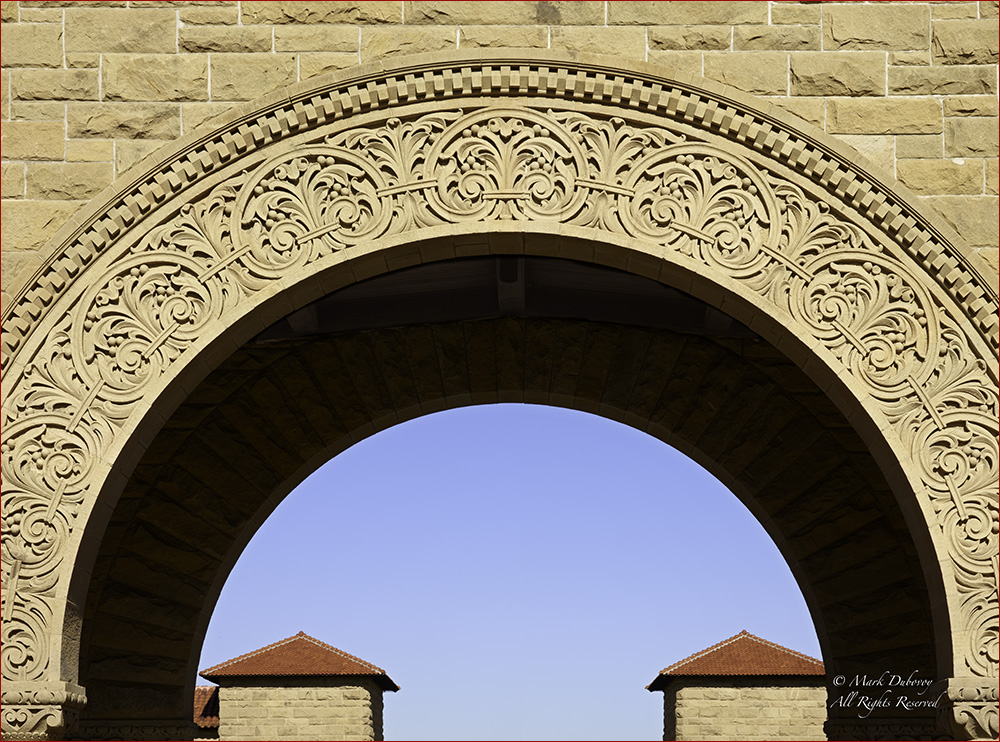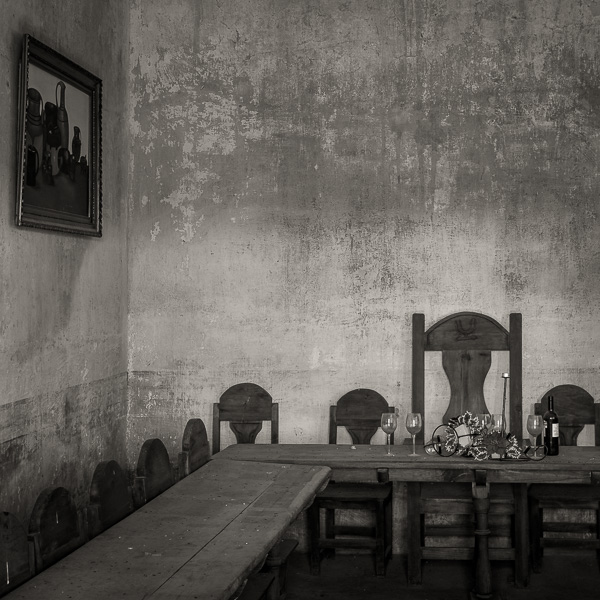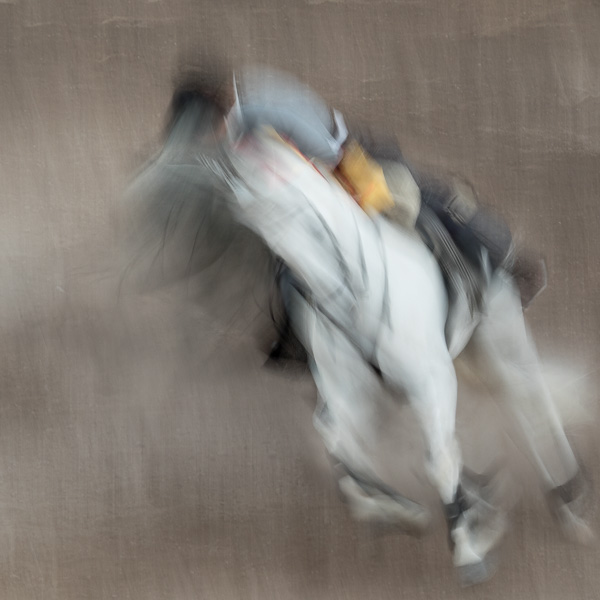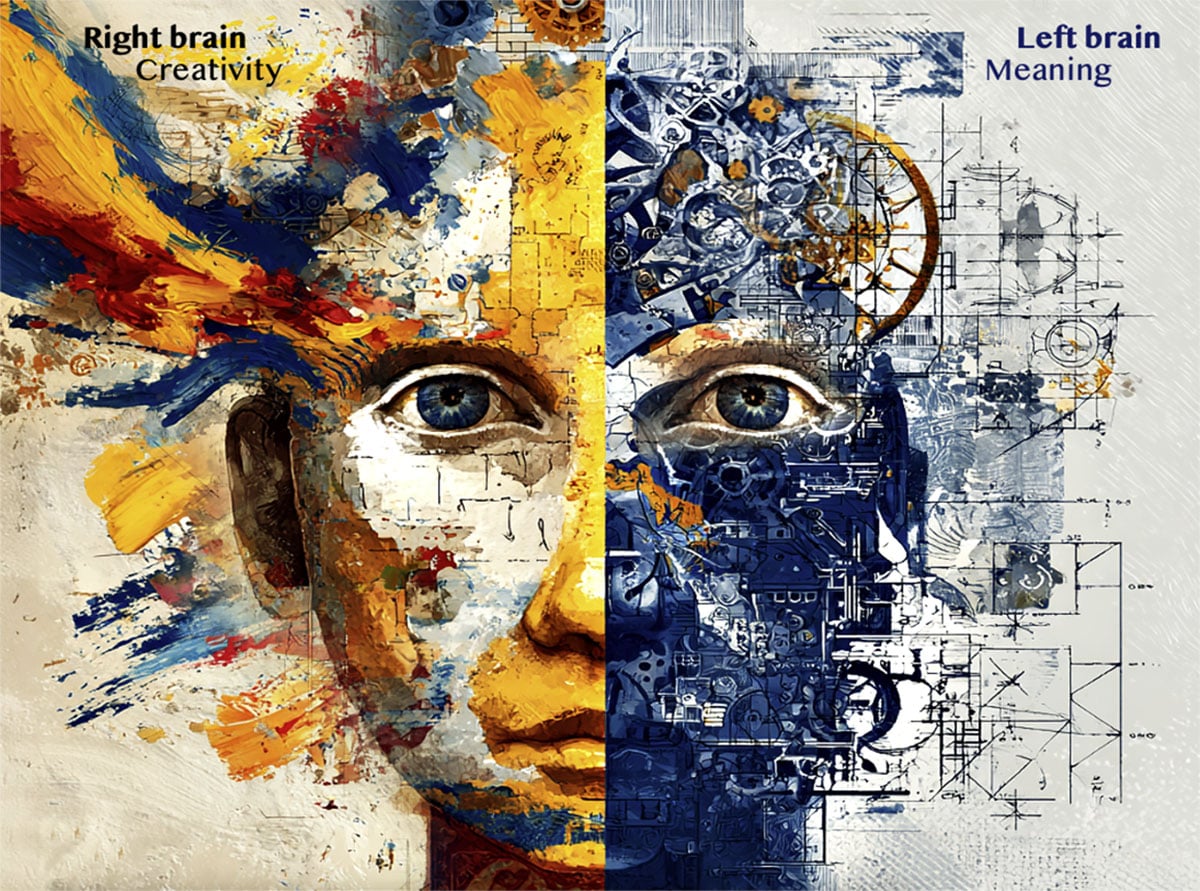
Stanford University.
PhaseOne 645DF camera with IQ 180 back and Schneider 110 mm lens
PhaseOne IQ Backs
PhaseOne announced their next generation of digital backs, the IQ series , about a week ago.
I had the chance to test a pre-production sample of the IQ 180 back last Thursday. Kevin Raber, Vice President of PhaseOne was kind enough to fly to California with an IQ 180 to spend one day with me putting the back through its paces. Everything that follows is based on my experience during this day of shooting, plus many prior conversations with PhaseOne executives and technical personnel about the new backs.
I caution the readers to keep in mind that I tested a pre-production unit. As such, there will be some changes between this unit and the final production units.
As in most pre-production units, there were a number of functions that were not yet implemented in the unit I tested. These include the focus mask, the 3 frames per second “quasi-Live View” (my term, not the official term) mode and the external connections for use with technical cameras.
The final color for the backs is still undergoing further calibration and refinement, so I will not comment on the color accuracy of the back.
The CTO
I met Claus Mølgaard, the President of R&D and Chief Technical Officer (CTO) of PhaseOne a couple of years ago at the first PhaseOne PODAS workshop in Death Valley, where I was an instructor. At that time, it struck me as rather unusual for the CTO of a company to show up at a field workshop.
Since then, I have observed and interacted quite a bit with Claus.
Claus is not only incredibly smart (maybe the term IQ 180 refers to his intelligence! :-)), but he is one of the most dedicated and hard working individuals I have ever met. He really cares about making photography better. Once you spend some time with him, you realize that for him it is not about fame, glory or money. His primary motivator is to make photography better. And his mind never stops, he thinks and dreams about this pretty much 24 hours a day everyday.
Why am I talking so much about Claus? The reason is very simple:
Here is a man whose personality and intelligence serve him extremely well to interface with photographers and people associated with photography in all different fields and at all levels. He is a man that can translate needs, wants and complaints directly into design and technology. He is a man who cares enough about improving the art and the craft of Photography that he is willing to spend weeks at a time a number of times per year to travel to workshops, interact with advanced as well as beginner photographers, to visit fashion photographers, product photographers, architectural photographers, etc., and to actually personally shoot pictures with different kinds of equipment under all these different scenarios.
Claus is as much at home in the middle of the wilderness taking photographs, in the middle of a high-pressure fashion shoot or in the middle of a semiconductor plant designing a new sensor architecture.
It is highly apparent to me that the IQ series of backs represent the culmination of several years of this type of interaction and hard work by Claus. In the IQ series, Claus has directly addressed every complaint that photographers had about the prior backs. He has also directly addressed all the wishes, needs and wants of MF photographers.
While obviously nothing is perfect, after working with the IQ 180, I can state without hesitation that Claus has delivered to us the best product in terms of image quality, functionality and ergonomics that current technology can deliver.
In my opinion, the new generation of backs represents a smashing success of superb decision making when it comes to the usual tradeoffs between customer wishes, real customer needs, available technologies, production costs, time to market and quality.
Dr. Mølgaard’s efforts have paid off handsomely, and by establishing this new benchmark in quality, functionality, human interface and ergonomics, I believe all of us in the photographic community owe Claus a deep debt of gratitude.
It is Not All About Megapixels!
The Numbers Game
There is an overwhelming tendency in our modern society to have rather short attention spans. Marketing organizations are well aware of this and tend to look for the single number that supposedly tells a potential customer everything about how good or bad a product is. No one seems to really want to take the time to dive in, test the product and find out how good or bad it really is.
A classic example of this is what car manufacturers do with audio systems. It seems that people really believe that more power and more speakers is always better. It turns out that nothing could be farther from the truth. In general, lower powered amplifiers tend to sound better. This is because it is much more difficult (and much more expensive) to design an amplifier that has both: high power and good sound quality. So, in the car industry, where costs are extremely closely scrutinized, the manufacturers cut costs by focusing only on what sells (power) and not on sound quality.
Think about it, as you add more speakers, more crossovers, more different materials each with a different tonality, more locations where sound originates (which can easily interfere with each other and/or totally confuse the spatial cues in the ears and the brain), more different amps and so on, the probability of completely screwing up the sound through all these different devices, transitions and interactions increases exponentially. The vast majority of knowledgeable musicians and audiophiles agree that most high powered car systems with lots of speakers sound awful; yet most consumers do not spend the time to listen (or do not even know how to listen anymore!). They just look at one or two numbers and pay exorbitant amounts of money for these systems.
A similar thing seems to happen with photography. Here we have a massively complicated process that people want to reduce to one number: Megapixels. And most people seem to believe that more Megapixels are always better.
To all those who still believe this, I would recommend that they compare the image quality of, say, a Canon G 10 (14 Megapixels) versus a Canon G 12 (10 Megapixels). Case closed. Less Megapixels (in this case and in a number of other cases) produce a better image.
Regardless of any claims or numbers or lab measurements, to me there is only one thing that counts, and that is the image. And when I refer to the image, I am not talking about pixel peeping at 100% and 72 dpi on a lousy uncalibrated monitor on a laptop. I am talking about looking at carefully made prints at a minimum of 360 dpi using top quality printers and paper.
Does the IQ 180 deliver?
In this vein, when Kevin Raber showed up at my studio with the IQ 180, I decided to go out shooting at nearby Stanford University in order to run some torture tests on the device. We did not go out to shoot fine art or good images by any stretch of the imagination. Our main interest was to try to evaluate resolution, dynamic range, color, noise levels and the general “look” ofprints from the IQ 180 files.
I picked really tough images to shoot: Extreme contrast, difficult to reproduce colors, specular highlights, deep shadows, metallic colors, difficult skin tones, you name it. Upon returning to my studio, we made 30×40 inch prints using an Epson 9900 with either Ilford Gold Fibre Silk or Canson Infinity Baryta Photographique papers. The prints were evaluated using a GTi calibrated print viewing station. I have also made and evaluated a number of additional prints after Kevin’s departure.
In order to see what the files looked like “straight out of the camera” I performed no adjustments prior to printing. The files were imported into CaptureOne 6.1. They were converted from RAW to TIFF files “as is” with sharpening disabled and no adjustments. The TIFF files were then opened in Photoshop where I used Photokit Output Sharpener 2 for output sharpening in default mode. I printed the images both with output sharpening as well as with no sharpening at all.
I am pleased to report that the results are stunningly good. The IQ 180 produces noticeably better prints than any other non-scanning digital back I have ever used.
Here are the differences I see versus my current workhorse, the P65+:
1. The obvious one: More resolution- There clearly is more resolution. How big is the difference? The numbers and specs not withstanding, to the human eye looking at a print, the apparent resolution difference seems to be more than the resolution difference between a P45+ and a P65+. This is partially a function of the higher number of pixels, but there is more going on here. I am not sure what it is. It could be the new sensor architecture or the support electronics or the way the image is built from the data, or something else. The difference is quite noticeable, and bigger than one would guess by just looking at the difference in the number of pixels.
2. Dynamic range- I was massively impressed by the data retrieval in the shadows. This back delivers shadow detail to die for. It all seems to be there with practically no noise. Again, the visual defies the numbers. PhaseOne claims approximately 1/2 F/stop more dynamic range than a P65+. Visually, the dynamic range of the IQ 180 appears significantly better than the P65+ and way better than I would have anticipated from just another 1/2 F/stop.
3. Color rendition- Unfortunately, as I mentioned before, this is still a work in progress. Michael Reichmann mentioned a red cast in the shadows in his review of the IQ 180. I see several other color anomalies still present. In fact, some of the test images I shot with Kevin Raber are going back to Denmark as part of the color tweaking process. I can only make two comments about color:
– It is not accurate at this point. We will have to wait until we can test a final version of the back to address color accuracy.
– In spite of the lack of color accuracy, I can see a richer color palette versus any previous back I have used. What I mean by this is that I can see more shades of each color and I can see finer resolution of color and tone, as well as smoother tonal transitions.
4. Noise- This one really took me by surprise. In the past, I had always considered the P65+ to deliver essentially noiseless images at ISO 50. From a practical point of view, I thought the P65+ noise at ISO 50 and ISO 100 was basically irrelevant.
After comparing the P65+ files and prints to the IQ 180 I have changed my mind. I can now clearly see the noise in the P65+ images. The IQ 180 definitely has lower noise and it makes the images appear smoother, more continuous and more “liquid” if you will. It kind of reminds me of comparing an 8×10 print from 4×5 film versus an 8×10 contact print from 8×10 film. Even though one can argue that the 4×5 shot has plenty of resolution and information in it, and the grain of a 4×5 is irrelevant at 8×10, somehow the 8×10 contact print always looks smoother and more liquid.
5. Lack of blooming in extreme highlights- Figure 1 below is a JPEG made from one of my files with absolutely no adjustments and no sharpening applied. Figure 2 shows a portion of the same image at 100%. Besides all the detail and resolution of the image, I would like to call your attention to the richness and fine gradations of the greens in the bushes on the right hand side, and the amazing resolution and detail in the shadows. The better your display, the better you will see it, but in reality, you need to see a print.
More importantly, please look at the purity of the specular highlights in the handlebars of the bicycles in the enlarged portion at 100%. Based on this image, it appears that the IQ 180 is in a class by itself in terms of the lack of blooming or any other artifacts in the extreme highlights.

Figure 1.
PhaseOne 645DF camera with IQ 180 back and Schneider 110 mm lens

Detail of the Image in Figure 1 at 100%
Functionality
A lot has been said about the functionality of the back, the new touch screen and all that in prior reviews, as well as in the official announcements and videos on the PhaseOne web site. I find it of little use to regurgitate all the same information one more time.
Therefore, I thought it might be more useful and interesting to share some examples of how I was using the touch screen during my shoot at Stanford University.
(I apologize that the pictures of the display on the back of the IQ 180 are not great, they are not sharp and have some keystone, but they were shot quickly with a hand held iPhone. I hope you will forgive me!!!!)
– As a default I chose the display to show a small thumbnail, plus a histogram, plus the image (see Figure 2). The thumbnail will show the highlight/shadow warnings, but the big image will not. However, if you tap on the thumbnail once, the big image will also show the warnings. Tap again and the warnings disappear from the large image, but they remain in the thumbnail. The highlight and shadow warnings are adjustable, so you can set them to any level you want (hurrah!). Notice the red highlight warning in the thumbnail.

Figure 2
– Tap on the histogram, and you get a beautiful histogram that covers the entire screen as shown in Figure 3.

Figure 3
-– Tap on the X and you go back to the original display mode.
– Tap on the rectangle in the top bar shown in Figure 2, and everything disappears, except for the image which now takes up the whole screen.
– Double tap anywhere on the image in any of the above display modes, and the screen shows you the place where you double tapped at 100%. You can drag the image to any other point with your finger.
– Double tap again and you are back to the prior screen.
– A very useful feature is that you can zoom continuously from 6% up to 400% by sliding your thumb up and down on the left side of the screen. For this particular application, this gesture is far better than “pinching out” as is done with iPhones and iPads.
– Tap on the multiple rectangles on the top bar and you get a set of thumbnails of your images as shown in Figure 4. Note: Auto rotation of vertical images was not implemented yet in the pre-production unit, but will be in the final version.

Figure 4
– You can navigate through different pages, select images, rate images and do all kinds of things similar to the way you would do it using an iPhone.
I hope you get the idea, once you get used to this kind of functionality in the field, all other cameras and all other backs feel antiquated.
Hardware
Under the Hood
There is a lot going on under the hood. First of all, the back is blazingly fast. You push the power button and it is on instantaneously. Navigating through an image and rendering 100% views is literally faster than using editing software in a fully loaded Mac Pro. The back also processes images extremely fast.
It is important to note that at 80 Megapixels, a typical TIFF file from this back is approximately 481 Megabytes. The size of the RAW files varies with the subject being photographed. During my one day with the back, sizes varied between 72 and 92 Megabytes each. Manipulating these kinds of files at the speeds that this back can sustain, requires some serious processing power.
The IQ platform contains a very powerful multi-core ARM processor with graphics hardware acceleration. This is combined with a PhaseOne designed IQ-4 quad core processor. The IQ-4 is their ultrahigh performance co-processor used for image sensor control, image processing, image compression, and extremely fast data moving. To further increase the system performance they have also included another couple of low-power ARM processors and a couple of special processors to run in parallel with the rest. All in all, an awful lot of parallel processing power in a small portable device.
The platform is also equipped with 1.5GB of low power high speed RAM and a substantial amount of on-board flash memory.
To achieve the highest performance, the lowest power consumption, and the fastest boot time, PhaseOne created their own multitasking operating system with their own custom designed user interface. In the words of Claus Mølgaard: “We don’t use Android OS, iOS, Linux, or any other generic operating system, because we wanted to create a unique operating system which is optimized for only one thing: Photography”.
On top of all that, the back has a built-in battery charger, plus the sensor , the display, and all the corresponding support electronics. Because the battery now fits inside the back, the available volume for electronic components inside the back is quite small. The company has done an amazing job of cramming all this hardware inside such a small volume. How they manage to cool all this without a fan is no small accomplishment either.
Outside the Hood
The IQ 180 is carved from solid blocks of aluminum. In the hand it feels like a small brick of metal that is practically bulletproof. This is without question the sturdiest skin a digital back has ever had.
PhaseOne has also paid a lot of attention to dust and moisture sealing. All contacts are covered with either special rubber grommets (that can be opened but not removed from the back) or spring loaded doors. The battery rests in its own internal compartment protected by a closed door and the door for the CF cards is much improved (although still not final), as is the mechanism to eject the cards.
A Tour de Force
I rarely get this excited about a new device. However, the IQ 180 is a Tour de Force in design, technological innovation, quality, functionality and ergonomics.
No, it is not perfect, and I can already think of other features and functionality for the future. I am sure that there are folks that will be disappointed in one way or another. I can think, for example, of someone that shoots very long exposures who will be disappointed with the one minute maximum exposure time.
No company can please everyone or build the perfect device for every conceivable situation. Trade offs are an inevitable part of life. The real trick is to pick the optimum set of trade offs. In this regard, I believe that PhaseOne has done a masterful job and gotten as close as humanly possible to the ultimate back given the state of the art of technology at this point in time.
In my humble opinion, the IQ 180 establishes a new benchmark not just for image and build quality, but also for ergonomics and functionality that no manufacturer in the photography world will be able to ignore.
The IQ 180 is definitely not just an evolution of the MF digital back. It is a device that finally breaks the chains of the past and establishes a new paradigm and a new quality standard for the present.
Feb, 2011
Read this story and all the best stories on The Luminous Landscape
The author has made this story available to Luminous Landscape members only. Upgrade to get instant access to this story and other benefits available only to members.
Why choose us?
Luminous-Landscape is a membership site. Our website contains over 5300 articles on almost every topic, camera, lens and printer you can imagine. Our membership model is simple, just $2 a month ($24.00 USD a year). This $24 gains you access to a wealth of information including all our past and future video tutorials on such topics as Lightroom, Capture One, Printing, file management and dozens of interviews and travel videos.
- New Articles every few days
- All original content found nowhere else on the web
- No Pop Up Google Sense ads – Our advertisers are photo related
- Download/stream video to any device
- NEW videos monthly
- Top well-known photographer contributors
- Posts from industry leaders
- Speciality Photography Workshops
- Mobile device scalable
- Exclusive video interviews
- Special vendor offers for members
- Hands On Product reviews
- FREE – User Forum. One of the most read user forums on the internet
- Access to our community Buy and Sell pages; for members only.













